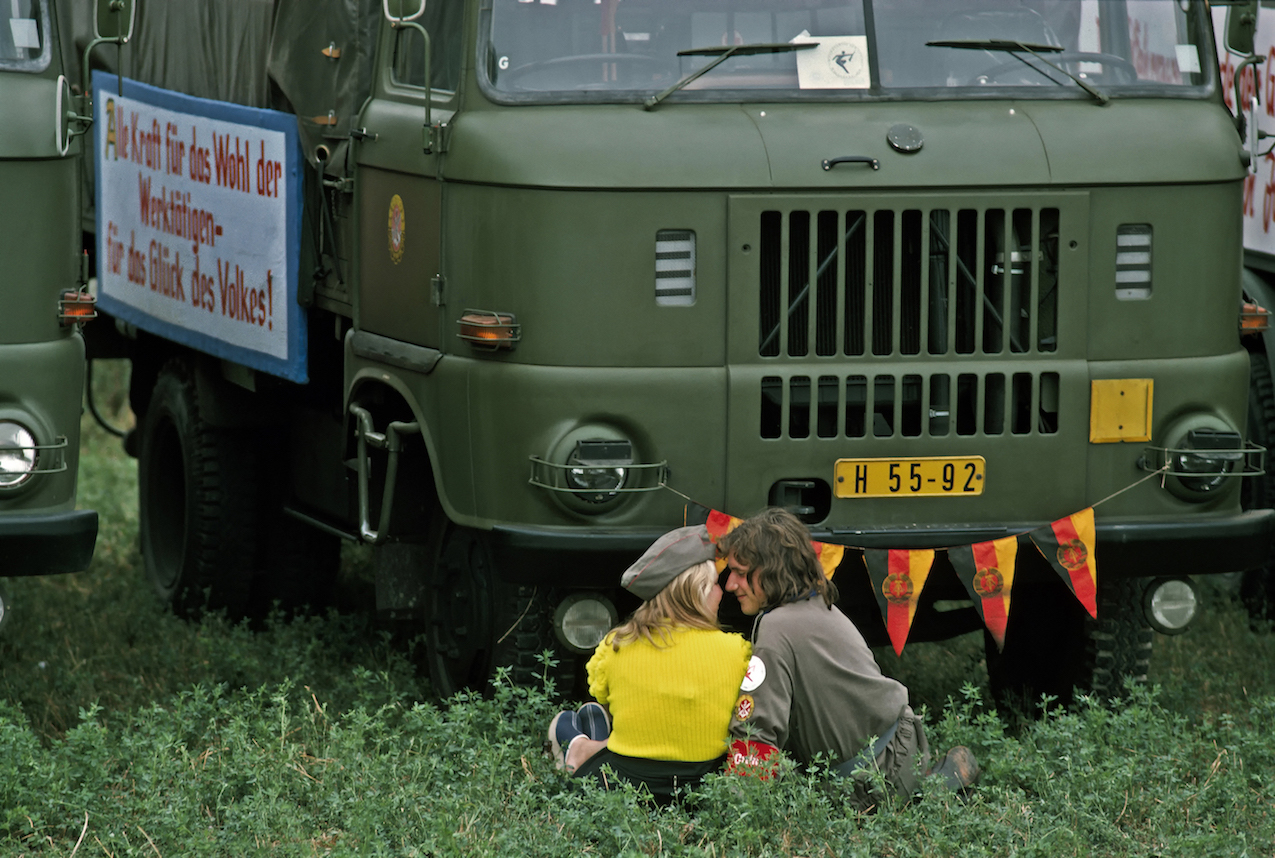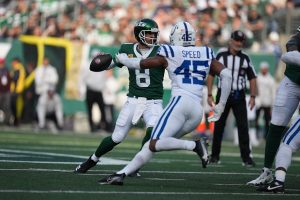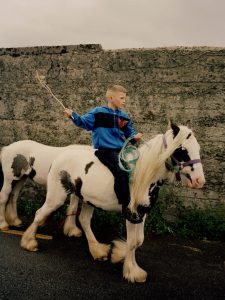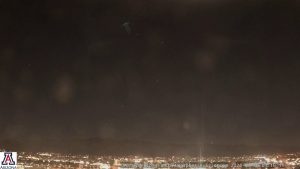
Hoepker’s success as a social documentarian is down to his combination of “a technically perfect mastery of photography – such as exposure, framing, composition – with an unerring sense of contemporary history,” explains Katharina Mouratidi, the show’s curator. “Moments worthy of the image, and a burning interest in the subject he portrays.” This pursuit of formal perfection springs from Hoepker’s early interests, the exhibition suggests. Aged 15, Hoepker received a plate camera from his grandfather, which became his travel companion. A student of art history and archaeology, it was on trips to Italy in the late-1950s that he realised he was more interested in the people viewing the art than in the masterpieces themselves.
The opportunity to accompany his wife, Eva Windmöller, who was accredited as a journalist in East Berlin, made Höpker the first West German photographer to be able to document everyday life in the GDR largely independently. He produced several reports in East Germany throughout the 1970s, photographing propaganda posters, crumbling buildings, new apartment blocks, domestic holidaymakers, and Trabant cars – all in colour. Upholding his responsibility as a quiet yet keen observer of the present, he was sensitive to the mundane objects and scenes that would become emblematic of this era of contemporary history.
“I think a country like the GDR has its very own and typical colourfulness,” Hoepker remarked. His now-iconic photographs are a testament to this, a homogenous sea of green hats and red flags at a military rally in Treptow, Berlin, chiming with the uniform colours of the Plattenbauten social housing complex in the nearby image. A picture of a uniformed couple who’ve ditched a military air show to flirt in the grass displays Hoepker’s ability to find moments of human intimacy among the historic.




